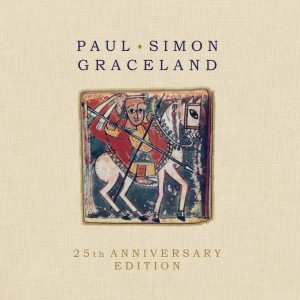Graceland, the cult album by Paul Simon, the white New York songwriter who set out to meet South Africa’s black stars, celebrated its 25ᵉ anniversary in 2011 and was reissued in 2012 with a lot of bonus tracks.
I needed a trigger to share my interest in this record with you.
Let’s go back to 1976.
I spent six weeks in South Africa. At the age of 12, you don’t yet have a political conscience, but listening to this album brought back all my memories:
- Flying over the black suburb of Soweto ;
- the moment when I ‘played war’, a game stopped by my godfather (‘do you want to start more riots or what?’);
- Johannesburg city centre, which was already very dangerous at the time;
- traditional dances for tourists in Swaziland…

Graceland, epic album of Paul Simon
Humanist? No, opportunist
What did Paul Simon have to do with black South African political consciousness in 1986? He had nothing to do with it. In a slight commercial slump at the time, Paul Simon had nothing to lose.
It was with humility that he wanted to record with the vocal group Ladysmith Black Mambazo and guitarist Ray Phiri, to name but a few.
This album was the subject of intense controversy. A few years earlier, Paul Simon had broken the embargo decreed by the United Nations. The country, under the yoke of Apartheid, was to be completely isolated, with the agreement of the African National Congress (ANC).
Paul Simon defended his point of view as an artist. He found his argument in the mouths of his black musicians: as artists, such groups were themselves prisoners of the cultural embargo.
A double punishment. You should have seen them, walking the streets of New York in 1986, astonished that they didn’t have to apply for a PASS that restricted black people’s movements in their own country. The singer has since reconciled himself with black movements.
Let’s talk music
This album is packed with excellent tracks (The Boy in a Bubble, Under African Skies, I Know what I Know…). You know You Can Call Me Al.
Paul Simon is the songwriter, according to Wikipedia, but it is the South African musicians who are behind the music. However, this video and even this track don’t really capture the white/black fusion, the musical collages, Simon’s falsely disillusioned lyrics coupled with the magical vocals of Ladysmith Black Mambazo.
Not to mention the mastery of the musicians and the genius of the sound engineers. It took many hours of editing to achieve such a result.
(Re)discover the magnificent and more traditional Homeless and Diamond On the Soles Of Her Shoes, built in two parts.
Is Paul Simon a political conscience?
No, you’ll find very few political messages in this album (not in Graceland, for example, although if you look hard enough…).
No, once again, he’s a ‘simple’ musician, an artist-citizen of the world, no doubt opportunistic, but above all avant-garde, because he knew how to reveal musical nuggets at the other end of his world. Along with Peter Gabriel, he was one of the precursors of World Music.
And he didn’t stop there, inviting Hugh Masekala and Myriam Makeba (two artists who had been in exile for years) to perform with him on stage right after the album was recorded.
On this album, Paul Simon has demonstrated his universal appeal, breaking down barriers and freeing himself from politics.

Leave a Reply